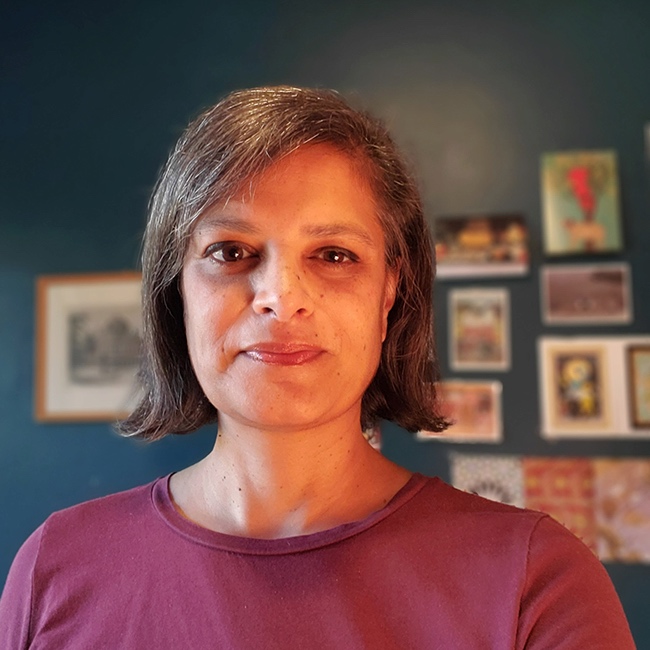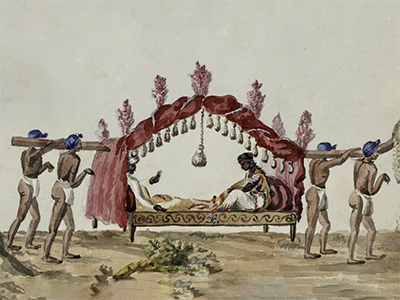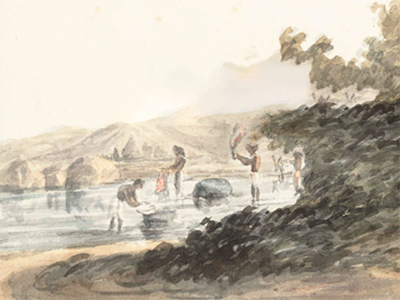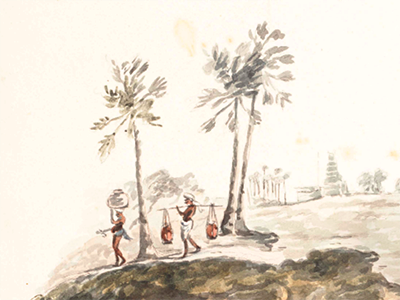Marika Sardar
Marika Sardar

Marika Sardar is an independent curator and scholar. Dr Sardar is a former Curator at the Aga Khan Museum and has previously worked at the Museum of Islamic Art in Doha, Qatar, the San Diego Museum of Art, and the Metropolitan Museum of Art. Major exhibitions include Interwoven Globe (2013); Sultans of Deccan India, 1500-1750 (2015), examining the artistic traditions of the Muslim sultanates of central India; and Epic Tales from Ancient India (2016), looking at narrative traditions and the illustration of texts from South Asia. Dr Sardar received her MA and PhD (Islamic Art and Archaeology) from the Institute of Fine Arts, New York University. She is the author of numerous articles and books, and an editor and contributing author of The Ramayana of Hamida Banu Begum: Queen Mother of Mughal India (Doha: Museum of Islamic Art, 2021).
Working for the Gwillims
I asked [Poppa] if she was married & she said very simply she had been married twice - that her first husband was a Dutch Captain of a ship who had bought her for two hundred pagodas when she was 10 years old - That her second husband, (the Captain having gone to Europe) was a steward to a gentleman in Madras by whom she had a son whom she had put into a charity school, but that, that man had now taken another woman, the Ladies maid of that family & gave her nothing nor took any notice of the child, wherefore she came to seek my service - after some time I used to question her because she agreed to have leave to see her child once a week - "I suppose" says I "you were very sorry when this man took another", "no - "said she, what shou'd I care for him?, I "care only for my child & I do not wish to "go again to any Gentleman - some servants "have been to me & wanted me to come "& live with their masters; but I like ... "Ma'am's money better. It is true they "will give me five pagodas a month but if I go to one of them, in a few months he will leave the place & I cannot leave my child for I shall dye [sic] if I do not see my Sild (as they say for child) - she has accordingly lived with me two years & 10 months, I believe in perfect innocence. The only trouble she gives me is asking frequently to go to see Sild; but a refusal occasions no resentment.
This heartbreaking story leaped out at me while reading the letters of the sisters Elizabeth Gwillim and Mary Symonds. Part of a long, chatty missive from Elizabeth to her mother, describing the many staff who formed part of the Gwillim household in Madras, this mention of a woman named Poppa struck a chord: a childhood marriage, a second marriage, a child, and a separation from that child. It was unbearable. Equally unbearable was Elizabeth’s airy dismissal of Poppa’s requests to see her child: “The only trouble she gives me is asking frequently to go to see Sild; but a refusal occasions no resentment.” Reading through the hundreds of pages of letters turned up more of the same; passing references to people whose economic and personal lives were controlled by the sisters, people who had no power to make any of their own decisions. These people appear in similar fashion in the paintings of houses and landscapes made by Mary; incidental, picturesque figures decorating the scene but not fully human.
Working through the archive
When I first was introduced to the Gwillim Project, the source materials appeared rich and intriguing. The paintings seemed to capture a range of interesting vignettes; the letters brought to life a (mostly) genial cast of characters. The project also provided the opportunity to return to studying natural history painting in India in the eighteenth and nineteenth centuries, a topic that I had been interested in for some time.
But what was the value of yet another project to create a social history of the British occupation of India? Piloted in Canada, who were these mostly foreign participants involved in this project and what was their stake in the subject matter? What was their motivation to produce a new approach to the sisters’ social context—would they feel the effects of producing scholarship that replicated the dominant narratives of this era? While the project was designed to highlight the experience of British women, considered to be mostly absent in typical histories of colonial India, investigation seemed to reveal that their letters and paintings contained many of the same perspectives as held by British men, and the project as a whole continued to privilege the kinds of sources and points of view as earlier assessments of the period. Research focused on the sisters’ interests and their difficulties in adjusting to life in India, but like the sister themselves seemed to ignore the world around them and the impact of their actions on the land where they had settled. Could the resources afforded to the Gwillim Project be better expended on finding sources and writing a history that focused on other subjects?
As I worked through the Gwillim archives for my own contribution to the project, showing Mary and Elizabeth’s paintings in the continuum of natural history paintings in India, my thoughts kept turning to the people in India whose lives were irrevocably changed by the arrival of the British in their homeland, and the forces that brought them into contact with the Gwillims, the people mentioned in the letters.
…most Ladies have [words crossed out] servants who fan them during dinner and stand behind their chairs for that purpose so you see great pains is taken to prevent our feeling any inconvenience from the heat.
The Gentoos…are pusillanimous, they are cowardly & deceitful - their frauds are like those of children & they have neither shame nor fear when they are detected, they seem to know no power to resist temptation & ... therefore ... to have no shame of doing ill & as to fear they themselves never appear to have any resentment of good or ill & if punishment has taught them to fear it only gives rise to new frauds ... without preventing them from doing amiss …
I do the house keeping business too which is a good deal of work for I am obliged to keep every thing locked up in a store room and to give out every day to the different servants a proper quantity for the days use I cannot trust them with more they are such pilferers, I must tell you how they contrived to cheat me of the candles I gave them out a proper number and they cut a peice [sic] off each before they set them up, this I should not found out soon a Lady told me to observe that and I found they really had done so, this is a good instance of the kind of thefts commited [sic] by the natives in general, they are not hardy enough to break open any place or to steal any large thing but they are always at these petty thefts.
Poppa sleeps upon the hard stucco floor in the room next to mine in the same apparel she wears all day her muslin dress & her gold necklaces &c - Mr: Gwillim calls three or four times every night to bring toast & water &c, & she always jumps up in good humour & appears in full dress, as that requires nothing but shaking herself.
It is pretty to see the numbers of little girls who are employed in this cotton ground they run about all day amongst the bushes with little baskets on their arms…
A new type of history would focus on what drove the people Elizabeth and Mary describe. What forced them to seek employment with British families who settled in India and conscripted Indian servants, expecting them to recreate the food and household environment of home? How did it feel to stand for hours in attendance at dinners, while others drank and dined? To be separated from family? To risk punishment for stealing necessities from those who had plenty? To be treated with disdain and contempt? While it may be “possible to uncover and highlight Indian voices and experiences in this colonial archive,” future projects may be better served by looking elsewhere to find the balancing narratives for the stories we write about the British in India; if we want to promote women’s voices, why not those of the women who found employ with Mary and Elizabeth, looking to the impact and long-term effects of a colonial occupation? While the letters and paintings of these sisters should be known to the public, so too should be the traces of their Indian contemporaries.










